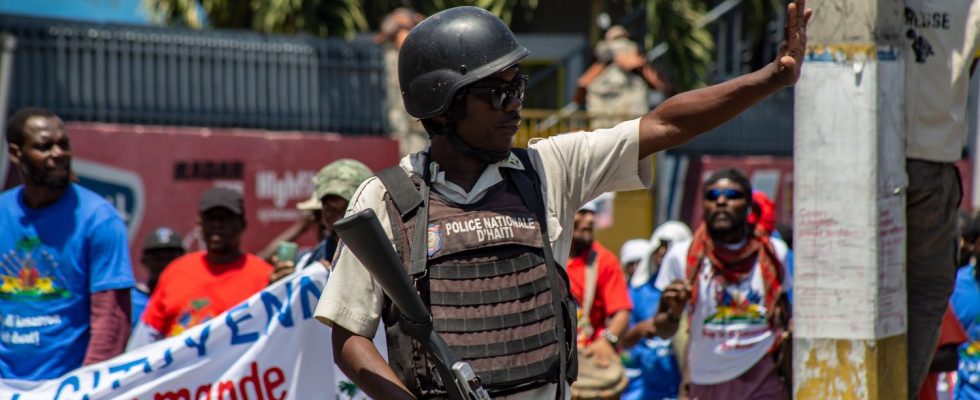In Haiti, the situation is now described as “cataclysmic” by the UN. With more than 1,500 deaths since the start of 2024, an emergency plan was to deploy peacekeepers in the territory, but the resignation of the Haitian government makes the situation too out of control.
Published
Reading time: 3 min

In its latest report published on March 28, the UN High Commissioner for Human Rights describes a State “on the verge of collapse”. Since the resignation of the Prime Minister on March 12, 2024, which was demanded by the gangs who took control of the country, the situation has gotten even worse.
Restoring order has become an absolute emergency and, to achieve this, the road map of the UN Security Council is clear and perfectly put together. We must proceed along three lines: appointment of the Presidential Council responsible for supervising the transition, deployment of a multinational peacekeeping force, and establishment of an airlift to support the Haitians. For humanitarian aid, 130 million euros were released by the United States. On security, Kenya is supposed to coordinate the 2,500 peacekeepers, and on the political level, the members of the transition committed themselves on Wednesday March 27 “to restore public order”.
Three axes countered by the explosive situation
But if on paper everything is under control, in reality, it is quite the opposite. The document formalizing the creation of the Presidential Council has still not been published. Internally, negotiations already seem to be preventing this new transitional body from moving forward. Disagreements persist in particular over the identity of the future interim Prime Minister.
Another problem in sight, the deployment of the multinational force, which is the cornerstone of the crisis exit plan. Who will be responsible for controlling and containing gang violence? Who will be responsible for remobilizing the thousands of Haitian officers who abandoned their posts? On paper, Kenya was committed to it, there again, everything was signed. Kenyan President William Ruto even ignored an internal court decision and gave the green light. But William Ruto is now delaying, out of caution, under pressure from the opposition parties and the Kenyan street: “I do not support this projectexplains an opponent. Our police officers do not master combat techniques. It is our police that they want to deploy, not even our soldiers or our special forces who are used to these areas. It’s like we’re sending them straight to the grave, like we’re asking them to kill themselves.”
A Haitian police force alone
As for the third axis of the emergency plan for Haiti, humanitarian aid, it is the same observation. We are still very far from the objective. The Port-au-Prince airport is still closed. If the air route is impossible to secure, even the sea route is compromised: the CMA-CGM company has just suspended its stopovers in the port of Lafito. With gangs controlling 80% of the capital, it is impossible to bring anything into Haiti, apart from weapons, the only “reliable supply chain”, observes the UN in its report. This illegal trafficking allows the gangs to have firepower that is often greater than that of the Haitian police. A police force alone today to respond to the emergency mentioned in all official speeches.
